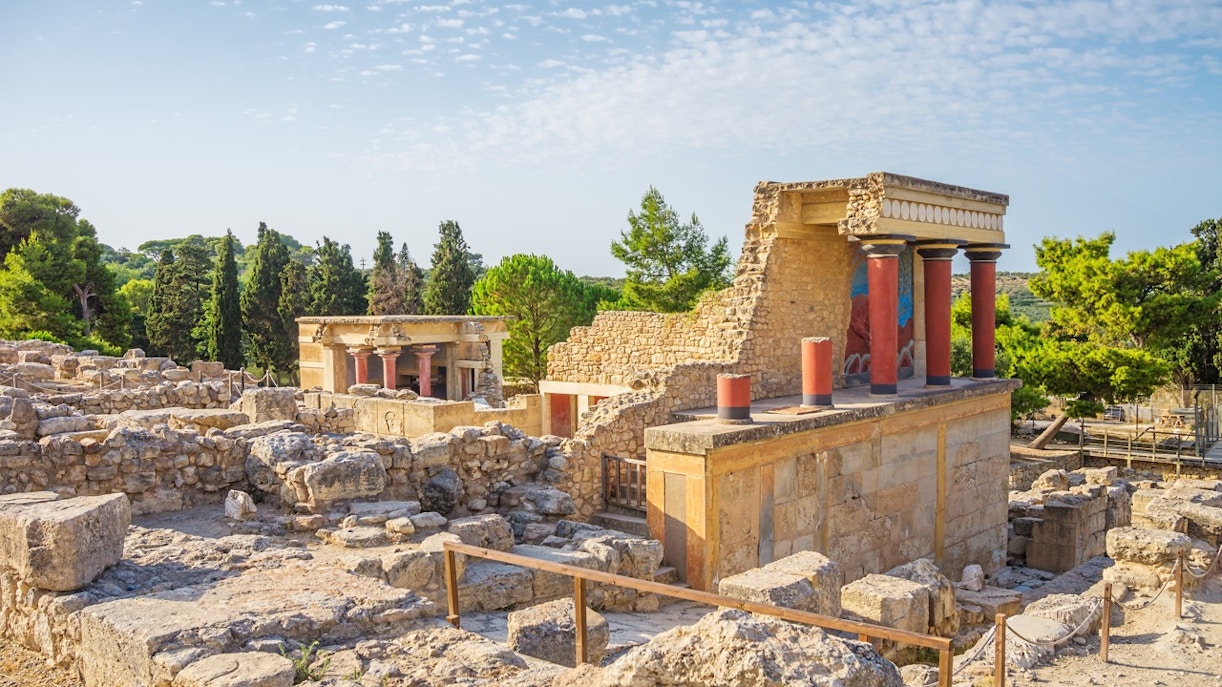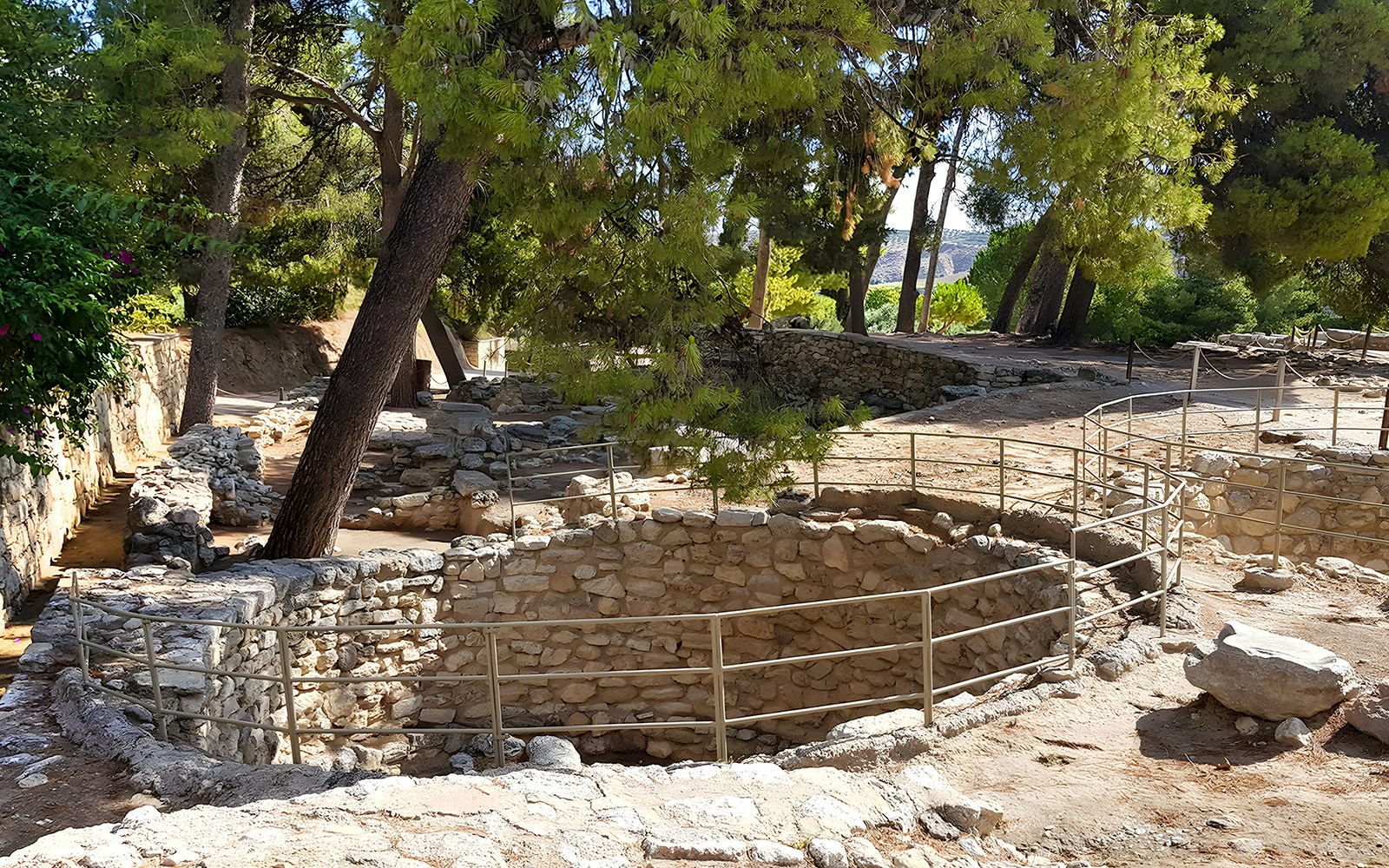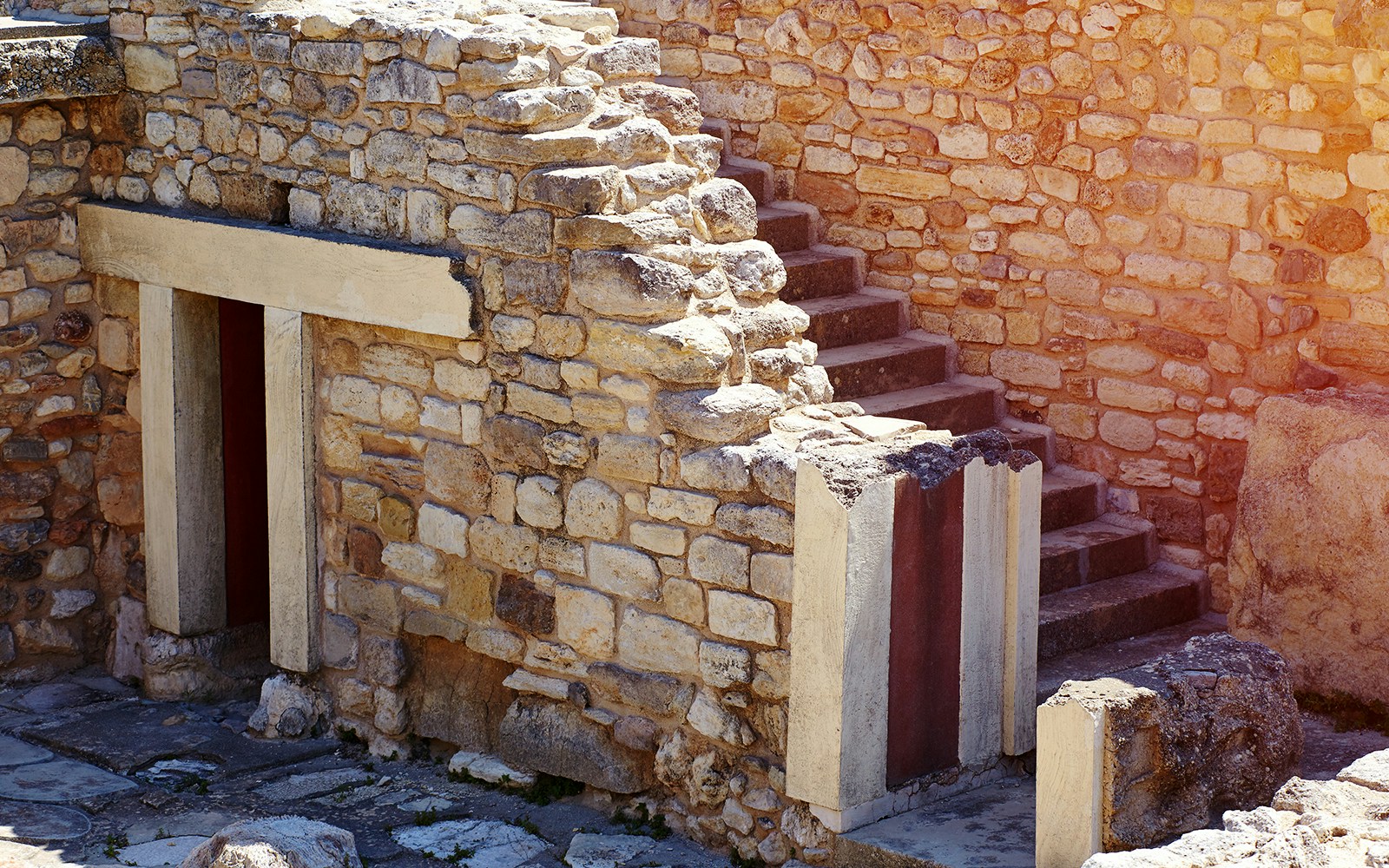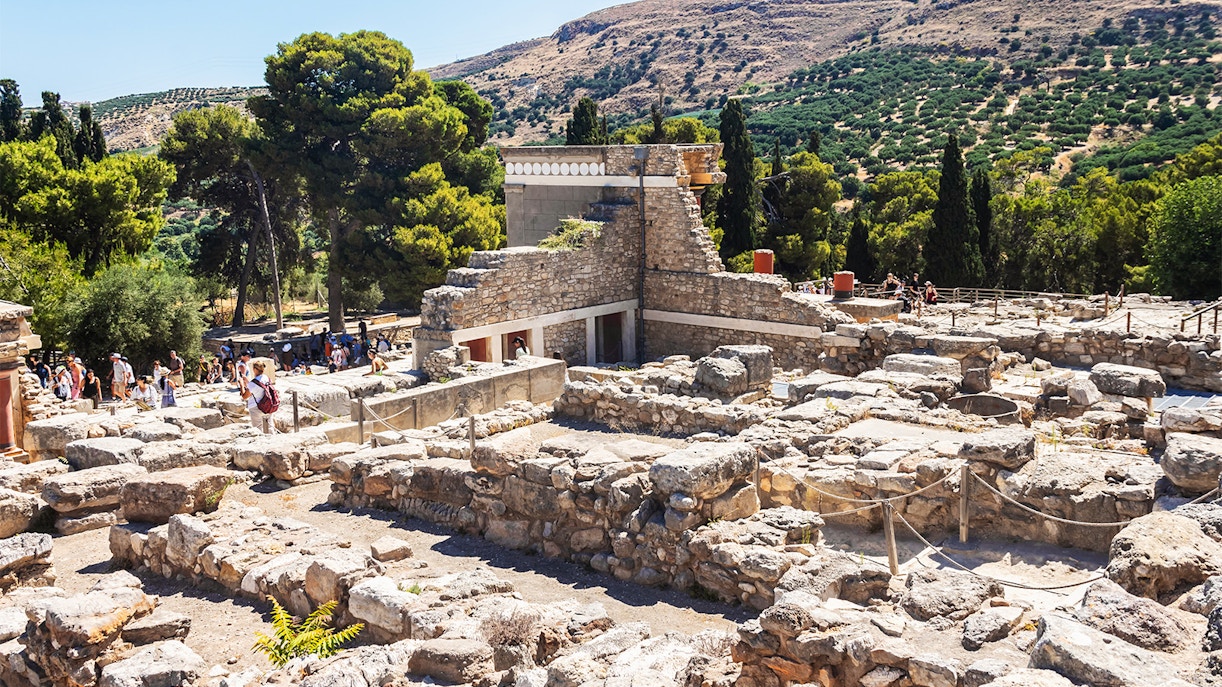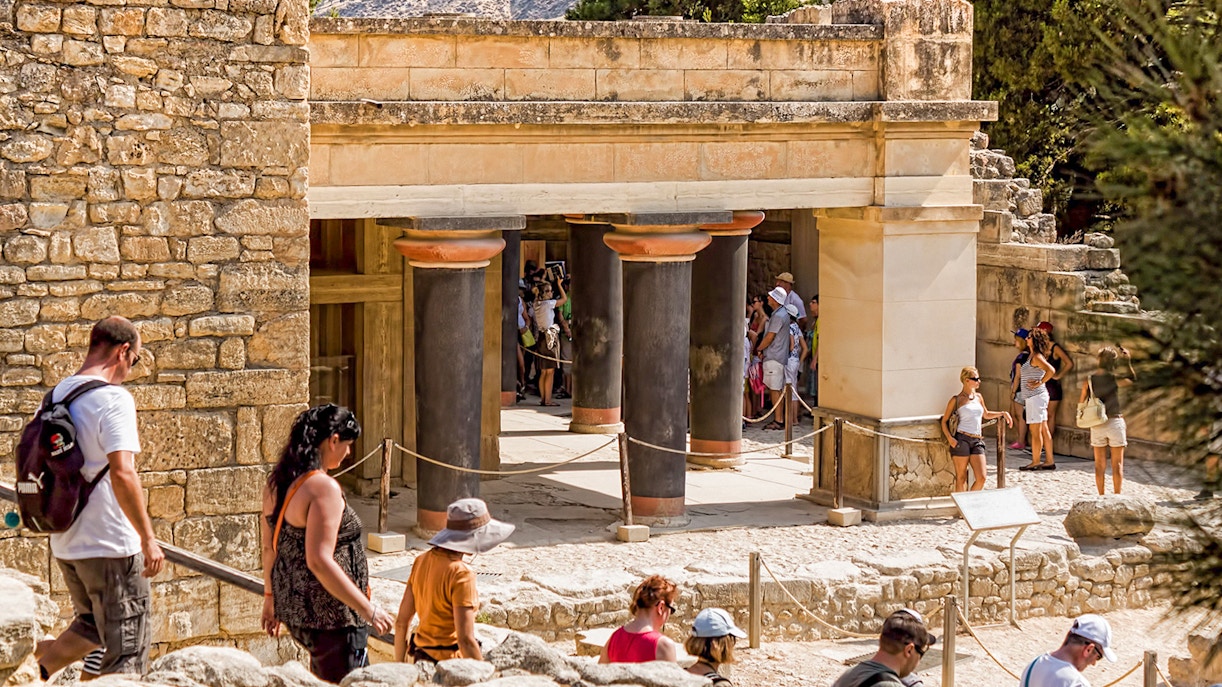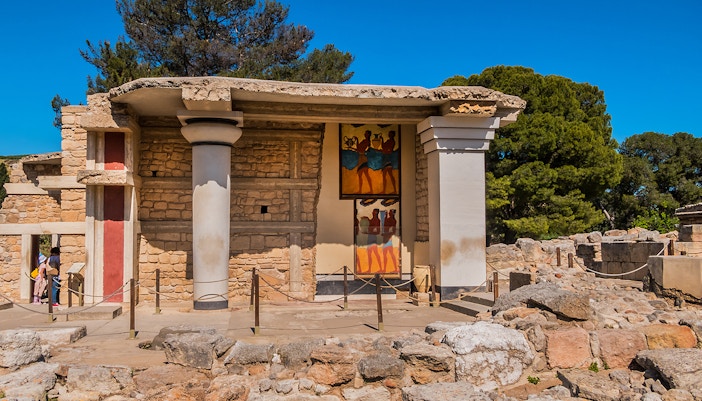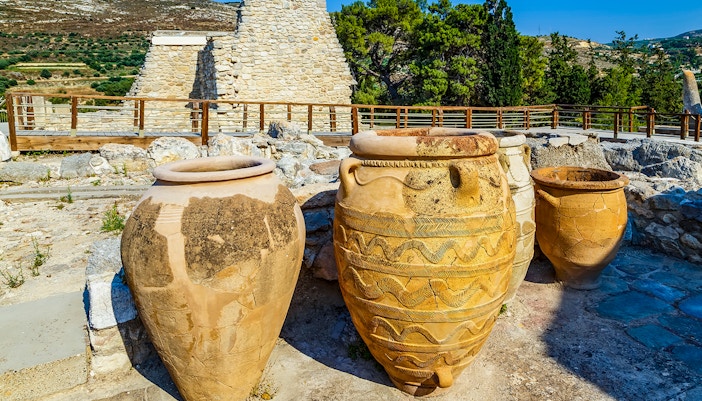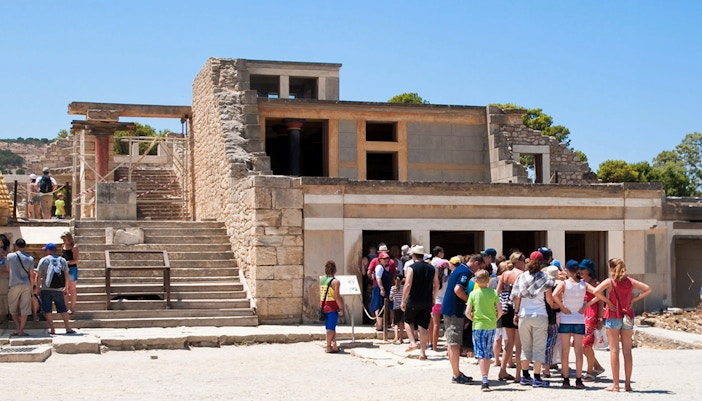When you hear ‘labyrinth’, you probably imagine an endless maze of twisting passages. Located just outside modern-day Heraklion, this remarkable Minoan complex features an intricate layout of over a thousand rooms, winding corridors, and multiple levels. To anyone unfamiliar with its layout, navigating the palace would have been a disorienting experience, much like entering a real labyrinth.
In the early 20th century, British archaeologist Sir Arthur Evans began excavating Knossos and was struck by how closely the ruins echoed the ancient myth. He named the civilization ‘Minoan’, after King Minos, and believed the palace to be the legendary Labyrinth itself. While some of Evans’ interpretations were romanticized, his discoveries firmly linked myth with archaeology and gave the legend of the Labyrinth a fascinating historical backdrop.
